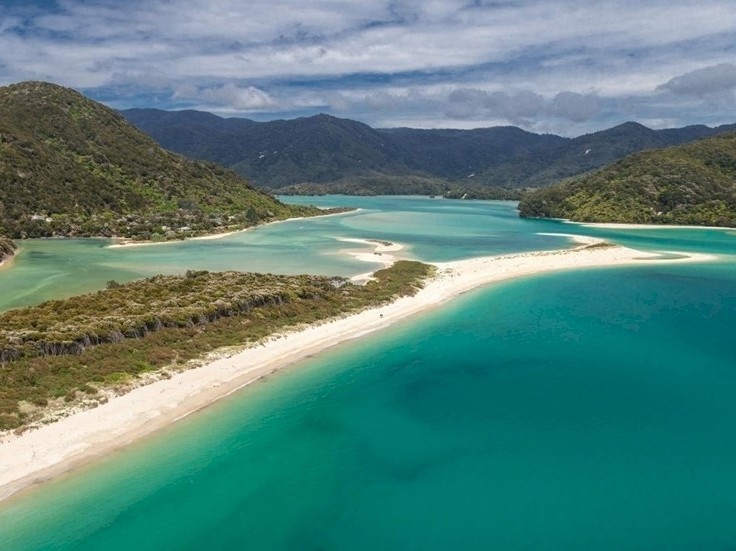Kiwis have generously got behind a campaign to buy 7 hectares of beach and scrub, with the aim to fold it into the Abel Tasman National Park. So far the campaign has raised over $1.3m, attracting over 20,000 donors. Even Stuff has got behind the campaign, no doubt sensing that this foray into campaign journalism could yield them more clicks.
Over the weekend, Andrew Little has suggested that the public purse could pick up the balance of the fundraising – currently at least $650,000 – given we have no idea what the other bids in the tender are. There is no doubt it is a popular campaign, and fair enough to the donors – after all people can decide to spend their money however they like. But it doesn’t follow at all that this project is an appropriate way to spend public money. Before any politician commits taxpayer’s money to any project they should think beyond the kudos of the publicity and be sure it is the most beneficial – and hence responsible – way to spend the next million of other people’s (i.e.; taxpayer’s) money.
It is the norm before any public money is spent for the Treasury to give advice on the value for money that the spend offers. To let politicians to just spray taxpayers’ property around like confetti is a recipe for disaster. While running on their gut political instincts is their natural predisposition, any politician who expects tenure needs to be a bit above that.
How long will this beach be there?
This land is essentially 7 hectares of sand spit. The scrub that has grown up provides a little more stability and height, but bugger all. This area, like many along the waterfront in the Nelson/ Tasman region will bear the brunt of sea level rise. Large chunks around Richmond, Mapua and particularly Motueka were highlighted as at risk in the Parliamentary Commissioner for the Environment’s report on sea level rise.
The work done by the Commissioner doesn’t cover off the Abel Tasman National Park – as there are few buildings at risk in that area. But how at risk is this $2m investment? At first blush, large chunks of this sand spit could be gone within our lifetimes. Even the relatively stable bush section could easily be undermined, especially by storm events, which are predicted to be more ferocious under climate change.
The future of this beach doesn’t look bright, but assuming it will stick around for the near future, doesn’t mean it’s an appropriate way to spend public money.
How else could the money be spent?
DOC has already said that the land is too expensive at $2m for them to invest. Quite rightly they have done their sums and there are other projects that give infinitely more return to the ecological estate than a piece of sandspit.
We all know DOC has plenty of land in its portfolio and can’t look after the estate it has already. The true conservation dividend it can earn comes from killing stuff – eliminating predators so that our native species can flourish. It does not come from buying more hectares that it can’t protect. Predator free zones are our best investment in conservation.
If the Awaroa sandspit is key to improving the tourist experience, then the tourist enterprises & Tourist New Zealand should be stumping up with the investment. Frankly, it is hard to see how this beach will make a massive difference to the average Abel Tasman walker. They have many stunning beaches to choose from already along the walk, and the beach is a detour from the Abel Tasman track.
So the only material concern here is that the new land-owner might prevent trampers from getting to the beach isn’t it? Is the loss of this beach really going to make a difference to the average tourist? Course not.
Andrew Little has not made it clear what he is trying to achieve by suggesting taxpayer’s money be spent on this beach, so without that substance it likes pure politicking – the “people have spoken” sort of nonsense. He needs to do better if he wants to be taken seriously, Maggie Barry has said she will “look at it” – again this smells like pure populist vote craving. Just because the media are going all a ga-ga on this doesn’t mean it is in the taxpayers’ interest.
My offer
Finally here’s an offer. I will make up the difference between the crowd-funding amount and the tender offer of $2m. I will guarantee that the public have access to the same extent that the current owner has kindly bestowed. But I will go further than that. I will undertake to give the property to DOC once my family has finished enjoying it. But I expect something in return – I want to use the property for my own private benefit meanwhile, just as the current owner does.
That way we don’t have politicians irresponsibly spending taxpayer funds, there is no risk of public access to this threatened sand-spit being denied, and the beach is guaranteed to end up in public ownership.
I can do this because it’s my money. That’s a big difference from politicians generously promising to spend you money on such folly. What do you say taxpayers – sound like a deal to save you money?

